Nupur Nishith

Tell us a bit about your background.
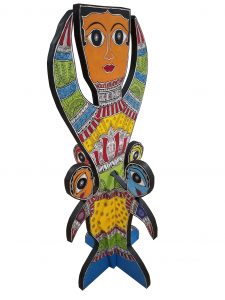
I was born in Madhubani district of Mithila region in the state of Bihar in India. Art is part of life in a typical Maithil family, being indispensable to every festival and ritual. Growing up in such environment I took up the Mithila art at an early age observing my mother Dr Mridula Prakash, a Phd in History of Mithila Painting. Even during my years at Business School and professional life at Bank my passion for art continued through participation in exhibitions and conducting workshops in early years in India.
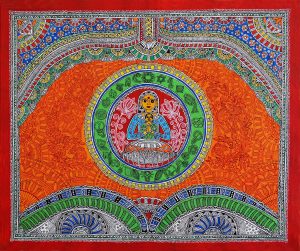
My paintings have been awarded and exhibited at various galleries, shows and publications in India and USA. My paintings were in the store at Asian Art Museum, San Francisco, USA. My painting Dheeya (The Girl Child) won an award at the national juried art show Color organized by Brooklyn Waterfront Artists Coalition juried by curator from Museum of Modern Art (MoMA) in 2016. My paintings are in private collections at many places all around the world. She featured among the popular people involved in social activities by Fame India Magazine – Asia Post Survey in 2017. Hand painted Piano for Sing for Hope was displayed at Central Park, NYC during celebrations of 50 Years of Public Art in NYC Parks in 2017 and also featured on the popular CBS New York Sunday Morning Show and Asian Art Museum, San Francisco, USA. I was honored to be a featured artist for Animodules (3D structures) by Barat Foundation, Newark on display at Nassau County Museum of Art, NY. My art adorns the walls of esteemed venues and homes. I am featured on Meet the Neighbors program by Hudson County Office of Cultural and Heritage Affairs.

How did you navigate towards the arts? And why painting?
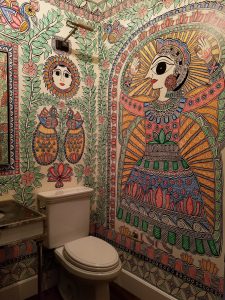
I moved to US in 2011 when my husband had to relocate for work. Since moving to US, I had to restart my career and I preferred to pursue my passion for Mithila Paintings. I spent few years just honing my skills and exploring new avenues such as paper, cloth, wood, ceramic, terracotta, glass, everyday products etc. apart from the traditional paintings on walls and floors. My interest in technology inspired me in taking the art form digital route in a way that the paintings can be showcased in various modes for widespread reach. I used to blog about Mithila Art and my paintings which was truly instrumental in developing my art and art career. I have evolved a unique style of art with an amalgamation of traditional motifs of ancient folk art with modern contemporary themes and tools with global appeal.
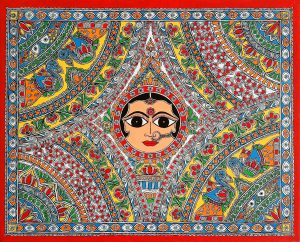
Could you share with our readers some history of Madhubani paintings.
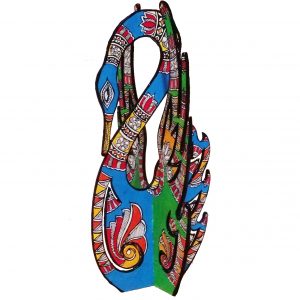
Mithila or Madhubani painting is a style of folk art form practiced by millions of women in the Mithila region of Bihar, India since ancient times. The origins of these paintings are not known, since they were traditionally drawn on walls and floors, and then redrawn over time, when they faded. They are still living because they are an integral part of any Mithila family function, and have been passed diligently through generations from mothers to daughters of Mithila. One view is that this style of painting originated at the time of the Ramayana, when King Janak commissioned artists to do paintings at the time of marriage of his daughter SITA, to Hindu Lord Ram. When there was little focus on education of girls in India, Mithila paintings probably also served as an informal medium of education. Some Aripans borrow heavily from science with their depictions of Calendar etc. Holding a brush is probably the precursor of holding a pen or pencil.

In 1934 after a great earthquake in Bihar, the then British Colonial Officer of Madhubani, W.G.Archer, brought these paintings to the attention of outside world. Hence it is also popularly known as Madhubani Paintings. During 1967 draught it was used for providing vocation to the women artists of this area. This was initiated the visit of Pupual Jaikar, the then Director of the All Indo-Nepal Handicrafts Board, and facilitated by Bhaskar Kulakarni. Traditionally, Madhubani paintings are drawn on floors or on walls, with the help of brush or pen made of bamboo. In some of the paintings even fingers were used as a drawing instrument. With the growth of available media, even modern coloring instruments are now being used on a variety of cloths, paper and canvas. With themes ranging from nature, spirituality, social events and science, these are highly complex intricate paintings having elaborate structure involving different types of geometrical figures and curves.

They also have very rich color patterns, with traditional painting typically utilizing natural colors made of plants. The paintings have to be understood in conjunction of folk stories, folk songs and other folk traditions linked to the occasion. There are paintings for each occasion in a man’s life such as birth, upnayan (sacred thread ceremony), rituals during marriage, and even Death (Aripans, the floor paintings are made in the prayer rituals after death too) and for various festivals such as Makar Sankranti, Kali Puja, Lakshmi Puja, Diwali, Bhai Dooj and others. These paintings are also Symbolic paintings, with widespread use of abstraction through symbols and patterns. Different motifs used in the paintings are quite rich in their meaning. The paintings draw inspiration from the folk stories, folk songs and other folk traditions linked to the occasion. Mithila Paintings dwell on heavy abstraction of thoughts by use of symbolism, and were probably the first modernist ideas in art, that went beyond What-You-See-Is-What-You-Get. Extensive use of natural symbols such as sun, moon, navagraha, bamboo, lotus, fish, peacock and serpent; and their interaction with each other in different contexts leave much to interpretation. Each artist of Mithila Painting has his or her own style, and the form of art lets its participants to explore the new. Probably, this is the reason why Mithila Paintings were done traditionally, only as a transient feature and then redrawn, something on which people leave layers and layers of their own imprints.
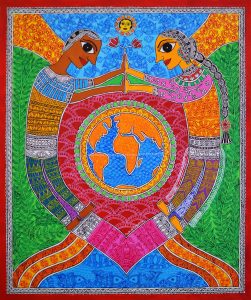
How do your creations differ from others’??
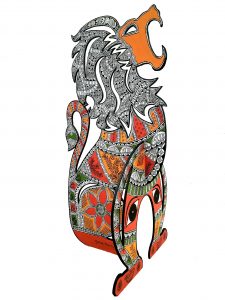
Over the years, I have evolved my own distinct style by fusing the contemporary ideas with traditional art form using modern tools. Mithila Artform is famous for the details in the paintings in a flat two-dimensional perspective with no shading or overlapping. Taking it to the next level I draw inspiration for my art from my experience and surroundings. I visualize objects and situations in perspective to create the symbolic motifs and designs which makes my art unique and distinct. Mithila paintings use natural and bright colors with symbolic distinct features, which I never hesitate to experiment with while conserving the essence of the art form. I like to work mostly freehand without using any stencils or pattern tools on my projects. I have also incorporated digital medium to Mithila art being one of the pioneers in the process.

A word of advice for budding artists? Especially those trying to gain a firm foothold abroad?
I feel honesty and patience are the key. If you are true to your art it will grow. We need to have patience and lots of it just to maintain sanity and encourage creativity and succeed in the Art world. Just Keep Creating!!
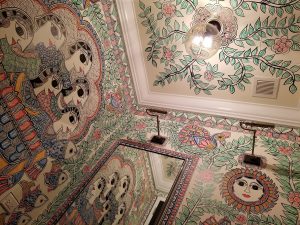
![]()
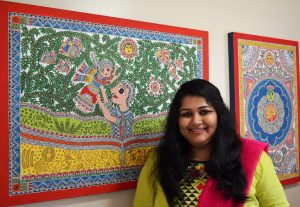
Nupur Nishith is a New Jersey, USA based artist, born in Madhubani district of Mithila region in India. Growing up in the environment famous for a unique ancient folk art of Mithila / Madhubani Paintings she took up the art at an early age from her mother. Even during education and profession in marketing and banking her passion for art continued through participation in exhibitions and conducting workshops in India.
Since moving to US she has tried to explore new avenues such as paper, cloth, wood, ceramic, terracotta, glass, everyday products etc. apart from the traditional paintings on walls and floors. Her interest in technology led her in taking the art form digital route in a way that the paintings can be printed in various modes for widespread reach. Her digital paintings have featured in national award-winning film and clothing line for children.
She has evolved a unique style of art with an amalgamation of traditional motifs of ancient folk art with modern contemporary themes and tools with global appeal. Her paintings have been awarded and exhibited at various galleries, shows and publications in India and USA. Her paintings are also in the store at Asian Art Museum, San Francisco, USA. Her painting Dheeya (The Girl Child) won an award at the national juried art show Color organized by Brooklyn Waterfront Artists Coalition juried by curator from Museum of Modern Art (MoMA) in 2016. Her paintings are in private collections at many places all around the world. She featured among the popular people involved in social activities by Fame India Magazine – Asia Post Survey in 2017. Her hand painted Piano for Sing for Hope was displayed at Central Park, NYC during celebrations of 50 Years of Public Art in NYC Parks in 2017 and also featured on the popular CBS New York Sunday Morning Show and on display at Asian Art Museum, San Francisco, USA. She was featured artist for Animodules (3D structures) by Barat Foundation, Newark on display at Nassau County Museum of Art, NY. Her art adorns the walls of esteemed venues and homes. She is featured on Meet the Neighbors program by Hudson County Office of Cultural and Heritage Affairs.
She also uses her art for social causes where she has made special paintings for NGOs working in the field of education and promotion of creative learning.
She maintains a website, Creative Mithila, to promote Mithila Artform. The name self describes itself where her art is inspired from the traditional ancient art from Mithila though evolved in her own unique style.



